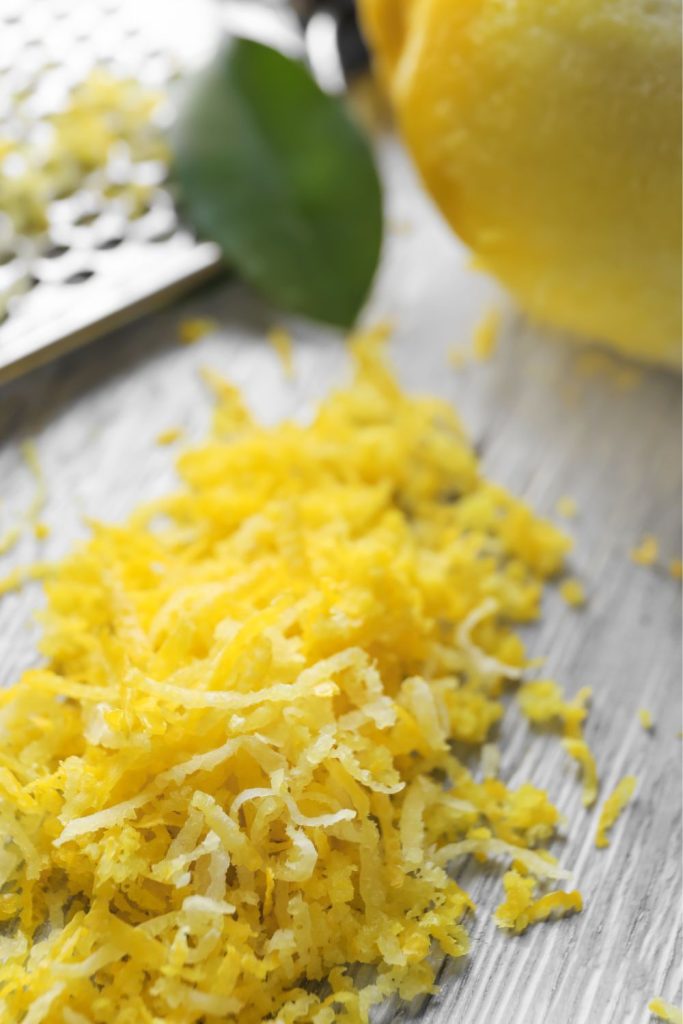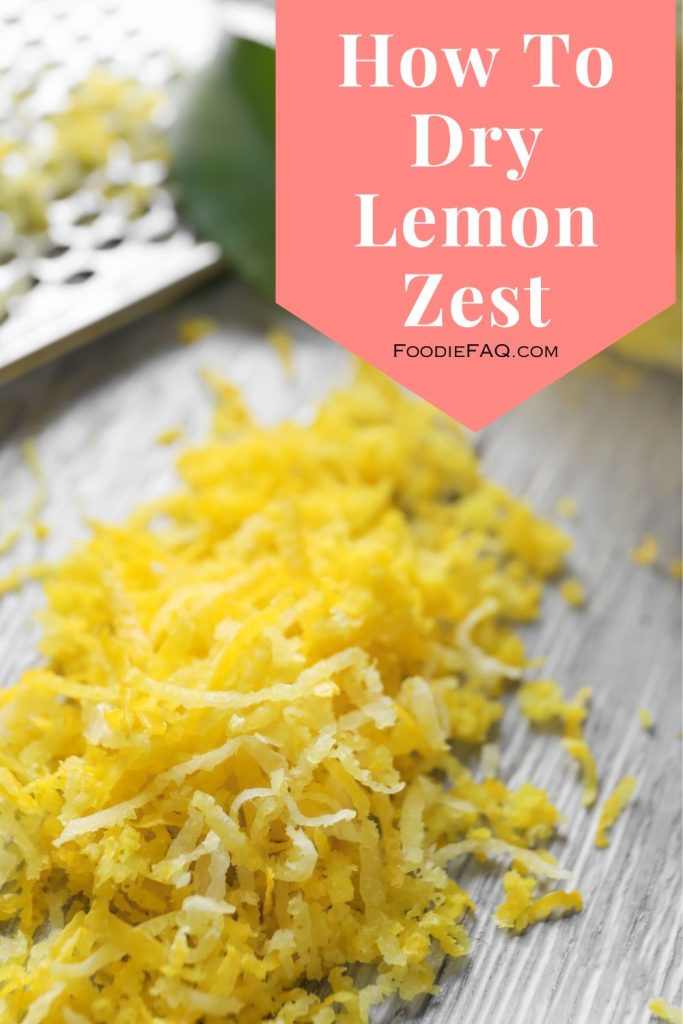Drying lemon zest is actually quite simple to do. It is handy because if you dry it and store it you can use it quite a few different ways.
Whether you have a surplus of lemons or are just looking to add a punch of citrus to your cooking and baking, knowing how to effectively dry lemon zest can be a valuable skill.
The process requires minimal equipment and ingredients, but attention to detail is key for ensuring your dried zest maintains its potent flavor and aroma.

Key Takeaways
- Various Drying Methods: Learn multiple methods (air drying, oven drying, microwave drying, and using a dehydrator) for drying lemon zest.
- Preparation is Crucial: Understand the importance of selecting, cleaning, and properly zesting lemons for optimal drying.
- Attention to Detail: Discover the significance of careful monitoring and timing in each drying method to preserve the zest’s flavor and aroma.
- Proper Storage for Longevity: Gain insights on storing dried lemon zest correctly to maintain its potency over time.
If you are in a hurry here is my favorite method for drying lemon zest:
Oven Drying Method
- Preheat oven to 170°F.
- Spread zest on parchment-lined tray.
- Check and stir after 30 minutes.
- Total drying time: 40 minutes to 1 hour.
Understanding Lemon Zest
In my experience, lemon zest is a key ingredient that can infuse dishes with bright citrus flavor without the tartness or liquid content of juice.
Lemon Zest Defined
Lemon zest is simply the outermost layer of a lemon’s peel. It is the yellow part of the skin of the lemon. This flavorful zest is rich in essential oils, giving it a concentrated lemon flavor that is perfect for enhancing a variety of recipes.
How To Zest A Lemon
Selecting Lemons
If you can, I recommend organic lemons for zesting because they usually don’t have any wax and in theory no pesticides were used. It just makes me feel a bit better overall about eating the skin but if they are way more money, I avoid them.
I look for fruit that is firm, vibrant in color, and free of any soft spots or blemishes. The best lemons for drying zest are those with a thick and brightly-colored rind as they offer more flavorful zest.
Washing and Cleaning
It is extremely important that you wash the lemons before zesting them.
I make sure to wash the lemons thoroughly under running water to remove any dirt or substances on the peel.
If the lemons are not organic, I’ll take extra steps to dewax them by using a solution of equal parts water and vinegar or by gently scrubbing under hot water. This ensures that no unwelcome flavors make their way into my dried zest.
Next, I either allow the lemons to air dry or I dry them with a clean kitchen towel. It’s critical for the lemons to be completely dry before moving on to zesting.
Zesting Techniques
For zesting, I use a fine grater or zester to lightly scrape off the outer layer of the peel, taking care not to include the bitter white pith.
I zest the lemons before cutting into them, as a whole fruit is easier to handle. The zest should be thin and uniform to allow for even drying.
How To Dry Lemon Zest
Drying lemon zest is a straightforward process that preserves the flavor and extends the shelf life of citrus zest. By removing moisture, dried lemon zest becomes a versatile ingredient for cooking, baking, or garnishing.
Air Drying Method
- Spread zest on a tray.
- Place in a warm, well-ventilated area.
- Stir daily.
- Drying time: About a week.
Oven Drying Method
- Preheat oven to 170°F.
- Spread zest on parchment-lined tray.
- Check and stir after 30 minutes.
- Total drying time: 40 minutes to 1 hour.
Microwave Drying Method
- Spread zest on paper towel-lined plate.
- Microwave on high for 2-3 minutes.
- Let cool before storing.
Dehydrator Drying Method
- Spread zest on dehydrator trays.
- Dry at lowest setting.
- Check after 12 hours.
- Allow to cool before determining dryness.
Storing Dried Lemon Zest
After successfully drying lemon zest, storing it properly is crucial to maintain its flavor and extend its shelf life. I’ll walk you through the best practices for storage.
Storing Dried Lemon Zest in Airtight Containers
- Choose the Right Container: Select airtight containers for storage, such as glass jars or sealable plastic bags, to prevent moisture and air from compromising the zest’s quality.
- Ensure Dryness: Before adding the zest, confirm that the containers are completely dry to avoid mold formation.
- Label for Freshness: Label the containers with the current date. This practice helps track how long the zest has been stored and ensures you use it while it’s still fresh.
- Storage Location: Store the containers in a cool, dry place away from direct sunlight or heat sources to preserve the zest’s flavor and aroma.
Uses Of Dried Lemon Zest
Culinary Applications
- Flavor Enhancer: Adds zest to baked goods like cookies and cakes.
- Marinades and Dressings: Imparts lemony brightness without moisture.
Homemade Seasonings
- Spice Blends: Pairs well with herbs for rubs on poultry and fish.
- Lemon-Infused Salt: Ideal for rimming cocktail glasses or seasoning vegetables.
Tea and Beverage Infusions
- Teas: A pinch transforms a cup of tea into a citrusy brew.
- Lemonades and Infused Waters: Offers a subtle lemon essence without the tartness of juice.

